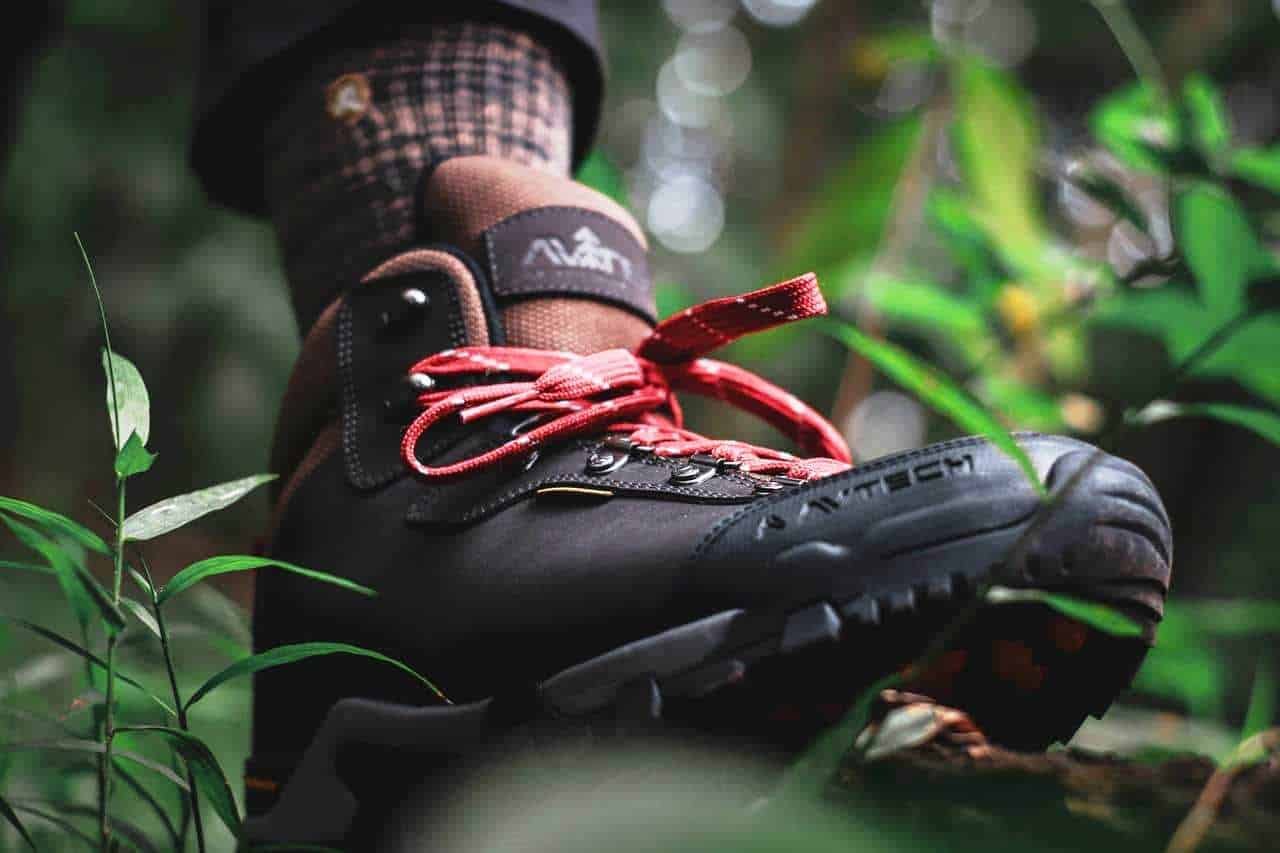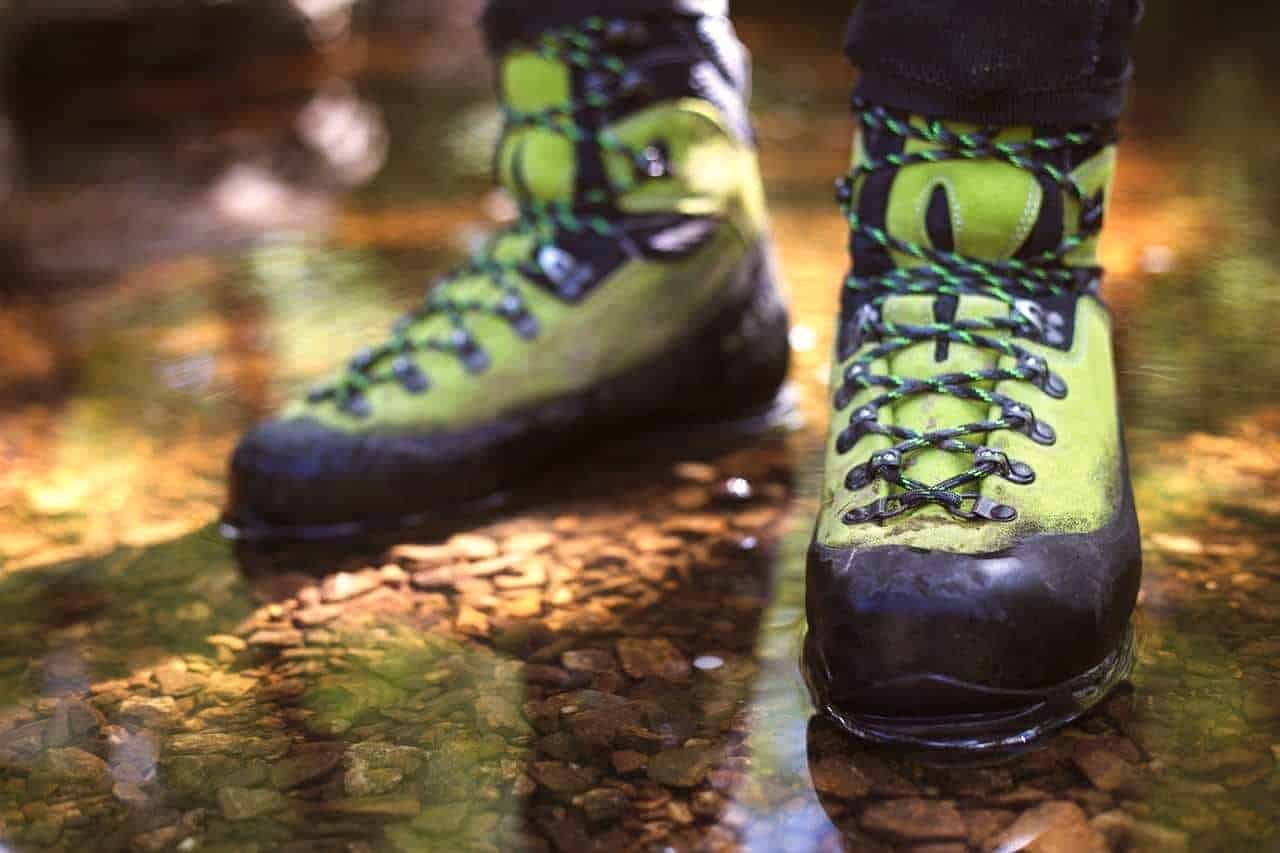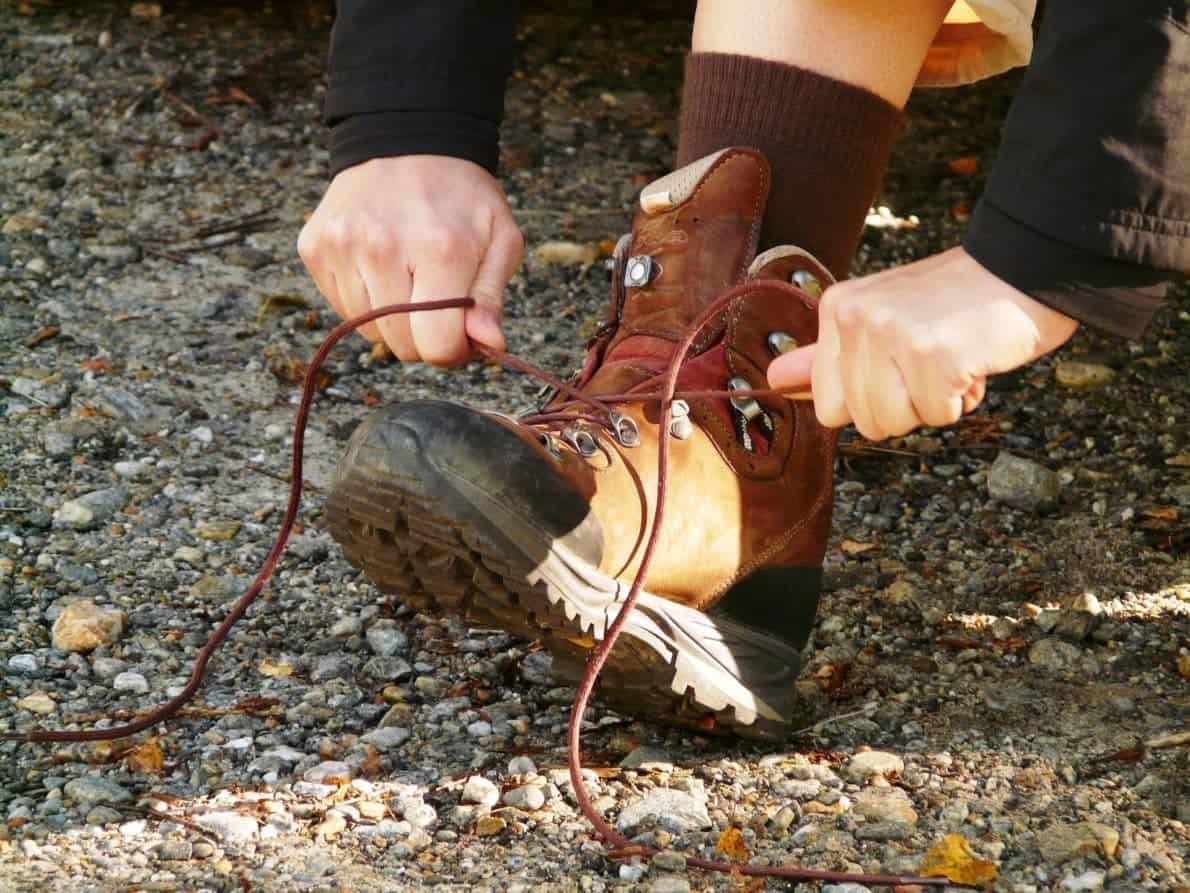The comfort of your toes is one of the crucial things to consider before any hiking adventure. The solace of this body part solely depends on the toe room. Consider it and feel the coziness or ignore it and feel the pain and agony.
Saving your phalanx from pain starts by selecting the best-fit hiking boots for both professional and amateur walkers. A good fit kit helps protect the feet from unnecessary hardship and prevents the phalanges from long-lasting bruises. But how much toe room do you need in a hiking boot? This guide has the answers. It reviews the necessary things to know about the hiking boot and toe room.

Image Source: pexels.com
How much toe room in hiking boots?
When it comes to acquiring hiking boots, all beginner hikers frequently ask the same question – how much toe room do they require? It is simple. Walkers’ boots should have a little space to shake toes willingly. Although there is no generally approved measurement, enough space is always needed for the toe comfortability. Ensure your toes do not hit the front of the boot while standing or walking. A boot with a broader toe space can also injure your feet and ankle.
Choosing a hiking boot with comfortable toe room
Like any other area of your body, the appendage is another essential part that needs coziness. You can buy a high-quality walking boot, but the most significant thing is a perfect fit. Below are the necessary things to do while choosing a walking boot with a comfortable phalanges room.
Size awareness
Size awareness comes first when choosing a comfortable kit. Size enables you to know the length, width, and arch of your feet before purchase. Understanding the foot measurement helps discern enough space needed for the toe comfortability.
Shop at the end of the day
Shopping during the day is not a bad idea, but it is preferable at the end of the day. Do you know why? Your feet naturally swell at the end of the day’s activities. Therefore, it is advisable to shop during this period to avoid the purchasing of over-tight boots that will injure the phalanges on the road.
Check for tightness
Fitting your finger at the back of your ankle is one of the ways to check tightness. One finger should slide in effortlessly at the foot outfit backspace. If your appendage gets cramped with a finger behind, abort and scout for another. Also, with your shoe on, you can stand up and twist your toes. If it is difficult, the gear is too tight.
Home test
After a shop test, do well by wearing your walking shoe around the house. This helps you feel the comfort of your appendage before embarking on a road adventure. Wear them around the room for 30 minutes or an hour. Ascend and descend the stairs to mimic uphill and downhill. Then finally, check for any signs of toe discomfort or itching. If your gear is problem-free, you are a champion. If otherwise, you will suffer a pathetic hiking experience.
Avoid testing with loosed lace
Checking a hiking boot out with loose lace might be deceitful. Begin by loosening the laces, glide your foot in properly, lace it up, stand upright and walk around. With the trail kit laced up, assess for any measurement problems. If your toes are badly squeezed, check for another. A kit with a quarter-inch or fewer phalanges cabin could be considered.
Try the multiple lacing method
Are you aware boot lacing technique affects the way your gear fits? The different lace pattern has a way of affecting the comfort of your road gear. Take your time and attempt numerous lace patterns before buying.
Consider the shape of your feet.
The shape of the leg is another essential thing to do before purchasing track gear. Walkers with narrow toes should consider a narrow kit, while wide feet should consider a wider boot.
Examine with trail socks
Socks solely help with the fitness of boots. With your socks on, check for any issues inside the boot, especially around the toes. If everything seems fine, you just won yourself the perfect road gear.
Try the wall kick test
Do this by kicking a wall gently while wearing your shoe. If your phalanges crush upon impact, you possibly might need a new pair.
Health impact of a boot without toe space

Image Source: pexels.com
Boots with a tight toe space are harmful to your feet. Gears that have little space at the front usually leave the feet with problems. Below are some issues caused by the absence of a toe cabin.
Toe ulcer
Extra tight footwear with no appendage space is the leading cause of foot ulcers. Ulcers are naked injuries that form when your boots are constantly rubbing up against the phalanges. However, ulcers are prevented by wearing the correct type of footwear. Therefore, choose your hiking outfit wisely.
Inward growth of the toenail
Toe claws inward growth is when the verges of the toenails grow into the skin of the toe. The big toe is mostly the affected area and can inflict discomfort, surging, and even infection. Wanderer’s footgear with zero toe room hinders the outward growth of the toenail. This can result in the ingrowth of toenails.
Corns
Corns are thick, punctuated lifeless skin that exists over a bony surface like a joint. It is caused by protracted pressure to the specific area, majorly by a poorly fitted voyage kit. Furthermore, corns can be hard or soft and can include blood capillaries or nerve fibers. If not properly treated, it often gets attached to deeper tissues. This makes it very difficult to eradicate.
Hammer’s toe
Hammer’s toe is another health effect of a tight toe area. This occurs when the appendage is deprived of enough space for development. It tends to get worse over the years if not catered for adequately. However, you can easily avoid it if you choose the right hiking foot outfit.
Mallet toe
Mallet toe is when the joint at the top of the phalanges leans down. Usually, severe corn frequently grows at the point where the toe presses to the floor. Most times, the second toe suffers most because it’s the longest.
Toe ailment prevention
Prevention is simple and straightforward. Road footwear that poorly is one of the significant causes of foot conditions. Do not rush to purchase hike shoes without a proper check. Ignore shoes with zero-toe space and always consider reading a guide before investing in them. Visit your doctor if you notice any signs or symptoms.
FAQs:
Where should your toes be in hiking boots?
Your toes should be moderately fit in your hiking outfit. Not too close to the edge and not exceptionally far from the front.
How much toe room should you have in Boots?
Toes in the boot should be given enough room. A half-inch or an inch of phalanx space is certainly not a bad idea. Make sure your toe cabin is not too small to avoid compression of the phalanges. If your kit has everything else aside from the toe room, do not keep it.
How much room should be at the end of hiking boots?
There should be no more than a quarter space that can only fit your finger at the end of your kit. Shove your toes to the front and put your index finger down the back of the shoe. If you can do this, you’ve probably got yourself enough room at the end. This finger fit room will help prevent unnecessary sliding of the foot while walking.
How do you know if your hiking boots are too big?
Identifying a big hiking boot is quite simple. A kit with a huge phalanx and heel space is ample. If your feet still shift from one side to the other when you have laced your footwear, it is a big boot.
Should I get a half size bigger for hiking boots?
Yes. Naturally, your feet usually swell up at the end of the day. So when getting a hiking boot, it should generally be half a size bigger. For travelers, your feet swell the more you engage them. Therefore, your track kit should be half size bigger.
Should you buy boots half size bigger?
Why not? Considering the scientifically proven reactions of the feet in the spring and summer season, you can. Your feet get larger in spring and summer. Therefore an extra space is needed for the warmer season but not too much because of winter.
Wrap up
Road comfortability solely depends on you. The choice of your voyage kit matters a lot before a road adventure. Make sure you choose a hiking boot that does not squash your toes while standing or walking. Feet make a hiker. Make them happy by making the right outfit choice, and they will take you as far as you want. Do not wear boots that will render them useless.





